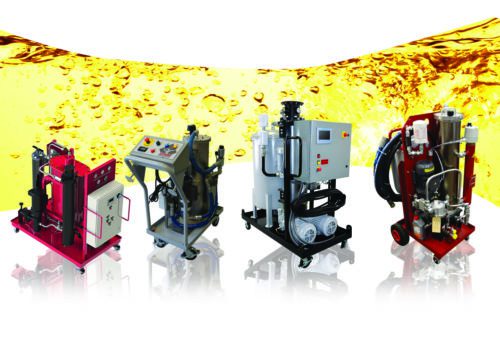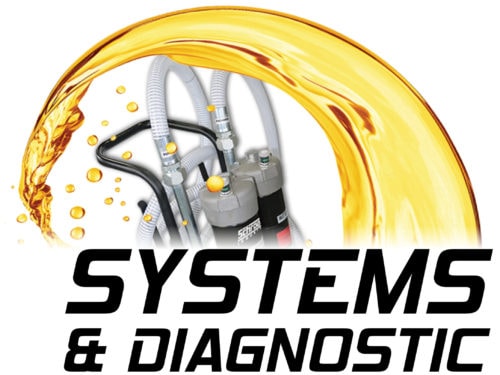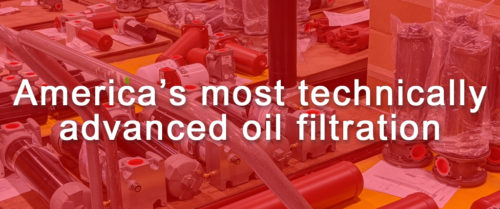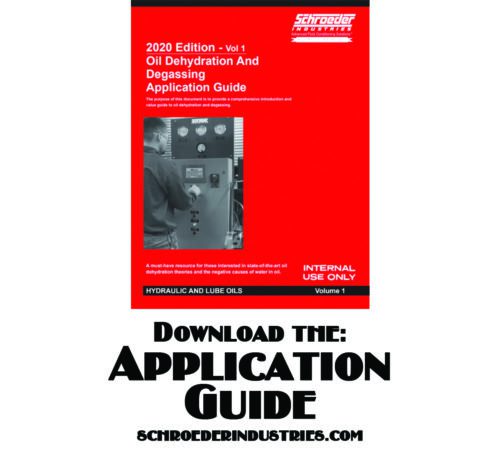What are Oil Dehydrator Systems?
For a complete listing of Schroeder Industries’ Oil Dehydrator Systems, click here.
There are many dehydrator systems, or oil purifiers, on the market today. What is the main goal of these systems?
To keep your fluids clean and dry for optimum performance.

At Schroeder Industries, we are the best at making sure that happens.
In the industrial manufacturing world, preventing liquid contamination is essential. To thoroughly accomplish water removal in a system, we use either positive pressure or vacuum units.
To address these types of water removal, we offer four pieces of purification through dehydration.
At Schroeder Industries, we have four (4) machines for oil dehydration. This includes the Triton Dehydration Station® Series (TDS-A and TDS-E versions), the Schroeder Vacuum (SVD), and the North American Vacuum (NAV) for oil purification.
Request More Information – Oil Dehydrator Systems
Request for Quote
Positive Pressure and Vacuum Dehydration, How Do They Work?
Positive pressure and vacuum dehydration are most likely not words that are heard in everyday conversation. We know that they are primarily used for water removal in a hydraulic system, but do we know how they remove water from oil?
There are many hydraulic oil machines that only remove free water. All of Schroeder’s Dehydrating Units remove both free water and entrapped/dissolved water from the oil.
Our vacuum options can also remove dissolved gases.
Positive pressure is when ambient air is conditioned through our patented process to increase water holding capabilities before being introduced to a reaction chamber.
In the reaction chamber, the wet oil meets conditioned air (air conditioned by an external hydraulic filter) and the water transfers to the air.
The water vapor is then expelled from the unit with the air as a moist air stream. Dry oil is then returned back to the system.
This positive pressure dehydration technology is found in our Triton Dehydration Station® Series.
Vacuum dehydrator for oil removes free and dissolved water and gases. This includes any other particle that could affect your oil.
Our vacuum technology uses ambient air, combined with reduced vapor pressure in the reaction chamber, to effectively remove the water and gases from the oil. The water and gases are condensed and collected for disposal while the dry oil is returned to the system.
Sources of Water Contamination
Water contamination can come from a variety of sources. Here are just a few:
- Leaking cooler/heater and pipe work
- Filling with new contaminated oil
- Leaking hydraulic component seals
- Tank breathing (without, or improperly applied desiccant breathers)
- Pressurized water cleaning
Application Guidelines 
Many applications can use either positive pressure or vacuum dehydrators, but it is important to understand the application parameters. Dehydration solutions are based on fluid type, the rate and source of the water ingression, reservoir volume and system operating or fluid storage temperature.
The target water content (parts per million or “ppm”) of the fluid also needs to be taken into consideration. It is also important to consider the placement of the unit in proximity to the system, available power, product cost and lead-time constraints.
What Industries Can These Be Applied To?
Power Generation
- Turbine bearing lubricants
- Electro-hydraulic control system (EHC) fluid
- Boiler feed pumps lubricant
Pulp & Paper
- Press and dryer section cylinder bearing lubricant
- Calendar section hydraulic fluid
- Powerhouse generator turbine location
Steel
- Hot and cold rolling mill bearing lubrication
- AWC & AGC systems









